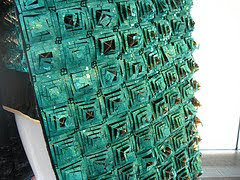
Photographer: Leonard Gren
Hello everyone!
THURSDAY 4 NOV. 10:00
Today and tomorrow Engage is arranging their annual, international conference in Nottingham under the title "The Art of Influencing Change". I´ll be blogging continously under this headline both today and tomorrow. Welcome in to follow the reflections and watch out.
11:00
I´ve just heard a fantastic lecture from Phyllida Hancock, participating in the project Contender Charlie. With a starting point in Shakespeare´s plays she uses his language and text in order to develop a leadership.
Using fantastic empathy, charisma and humor, she used Shakespere´s play, Henry V to show how different roles and strategies build leadership. It was really a superb lecture! To learn more about Contender Charlie follow the link.
http://www.contendercharlie.com
15:30
Since before lunch the conference has focused on how the Internet can be used in order to build networks in different types of art projects. The objective being to use the net to build sustainable, social models based on a thought that the Internet will change peoples behaviour in connection with a global, ecological perspective.
Ruth Catlow from Furtherfield presented their Zero Dollar Laptop Project. ZDLP is based upon a thought that people through creative and critical thinking can become active creators within thier culture and society.
Sam Bower presented the project greenmuseum.org which wants to inspire people to contribute to the creation of a sustainable society where ever they live. Greenmuseum.org contributes to that by offering access to information, possibility to interconnect with people and ideas and making resources and tools available.
Jonette Middleton presented her art project "Unity Panda" where she with the aid of Facebook and a shop in Coventry and 1 knitting pattern how to knit a Unity Panda got over 500 people to knit parts making up 130 Unity Pandas. These Pandas are going to be used in Panda diplomacy with China.
Länkar
Zero Dollar Laptop Project
greenmuseum.org
Unity Panda
FRIDAY 5TH 09:00
Yet another day at the conference. To summarize my impressions so far there are 2 themes dominating the conference. (But that should not be taken as a sign where all practice is going, it could also be put down to choices made by the organizing committee for the conference). The themes are that social media is used in order to create networks using art and art practice as a tool for people the change and influence their every day life. The other theme is that art and art practice is seen as a tool to create a sustainable way of living. There has been several speakers presenting projects where the framework is the global ecological challenge and art as a tool for a sustainable way of living. I´ll be back with more reflections during the day.









